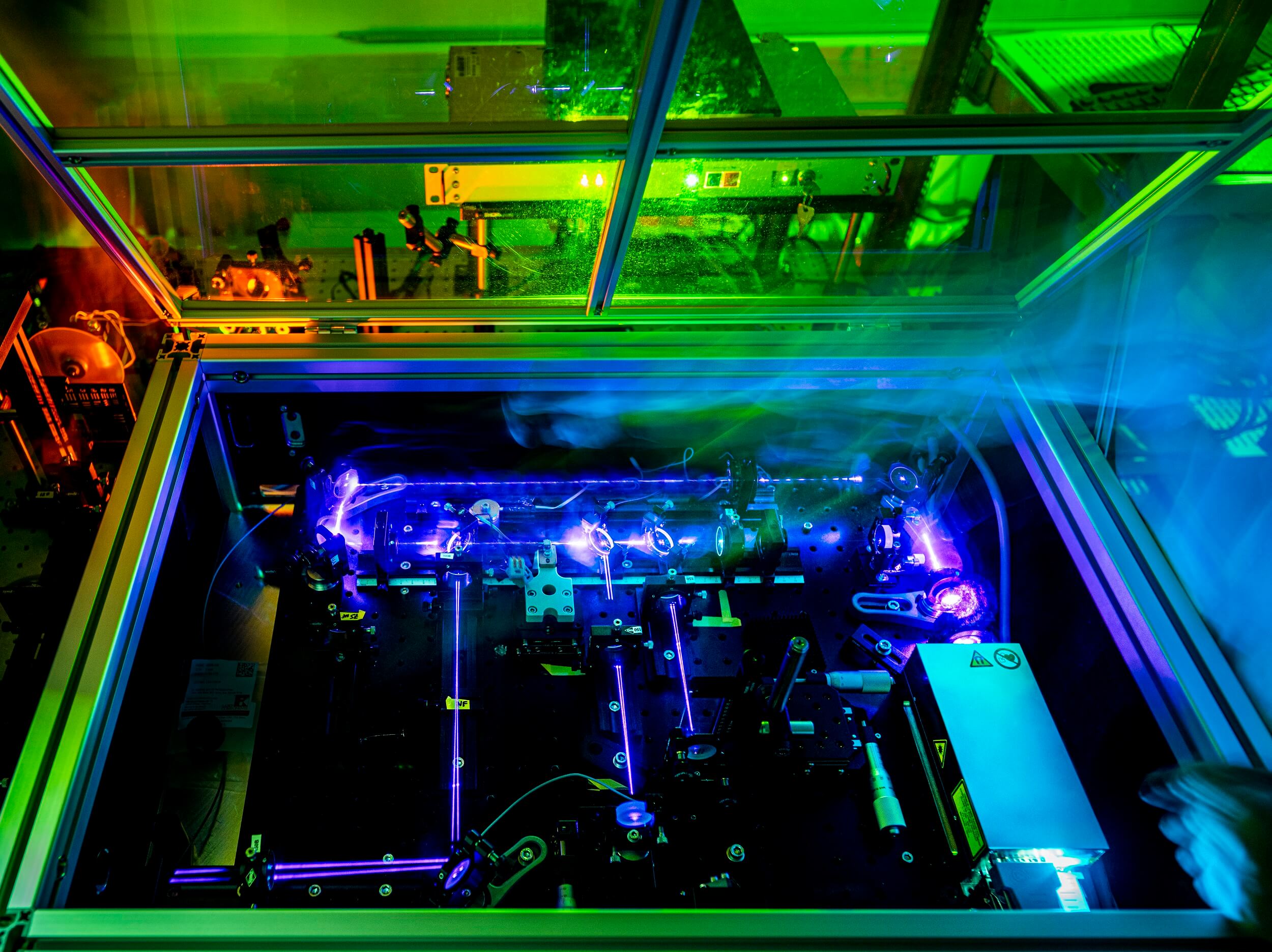Jena (Germany) / April 27, 2023
Tracking tumors with quantum optics
New research alliance QUANCER uses quantum imaging for cancer diagnostics
The QUANCER research alliance is conducting research on a new imaging method for cancer diagnostics using quantum microscopy. The alliance consisting of nine partners from science and industry, including the Fraunhofer Institute for Applied Optics and Precision Engineering IOF, is thus advancing a new type of tumor diagnostics.
Quantum imaging enables insights into previously invisible wavelength ranges. In the future, also tumor diagnostics should benefit from this technique. The QUANCER consortium focuses on quantum microscopy with non-detected light for chemical-selective imaging of tumor tissue in the clinical setting, and thus aims to advance cancer diagnostics with its novel microscopy system.
Within cancer diagnostics, different imaging techniques are used to detect and visualize tumor tissue. The previous gold standard in pathological diagnostics is formed by contrast imaging methods and light microscopy. A current trend in the detection of tumor tissue is digital pathology. Here, digital microscopes are mainly used, which could be extended to allow for infrared microscopy. Imaging in this wavelength range enables the visualization of tissue without the additional use of contrast agents. However, since infrared detectors are limited in their efficiency and signal-to-noise ratio, this method is reaching its limits.
Imaging with entangled light particles
This problem is addressed by the QUANCER research project. Using quantum imaging techniques with non-detected light, the previous limitations of infrared microscopy can be overcome. To do this, pairs of correlated photons, or particles of light, are generated. One is sent to the tissue sample, the other is detected by a camera.
As the particles are entangled, the information picked up by the photons on the tissue is transferred to the photons to be detected by the camera and made visible there. The special feature here is that the photons of the two light beams can have different wavelengths. This means that the light beam that interacts with the sample can be used to read out specific information from the sample choosing an appropriate spectral range, while the other light beam lies in the visible range, for example, and therefore can be read-out by a commercially available, highly-efficient, low-noise detector.

Novel tumor diagnostics based on quantum optical imaging
The researchers in the QUANCER project combine quantum imaging with non-detected light with a professional microscopy system. The goal is the clinical demonstration of a novel tumor diagnostics based on quantum optical imaging by building a scanning microscope in the mid-infrared range. Following the development and assembly of the system, the demonstrator will be used at the University Hospital Jena, where it will be tested on head and neck tumor cells as well as brain tumor cells.
Quantum infrared microscopy, as developed by QUANCER, allows chemically selective imaging and thus the detection of tumor tissue as well as other abnormalities in tissue morphology. In the long term, this system shall be further developed to become a new tool for cancer diagnostics. The principle of the method can also be extended to other areas and used, for example, for the detection of microorganisms, viruses, and toxins.
The partners in the QUANCER project
The project is led by Rapp OptoElectronic GmbH. In addition to the Fraunhofer IOF, other partners include the Technical University of Darmstadt, the Leibniz Institute for Photonic Technologies e.V., the TOPTICA Photonics AG, the Institute for Applied Physics at Friedrich Schiller University Jena, the Institute for Laser Physics at the University of Hamburg, the Department of Otolaryngology at the University Hospital Jena, and the n Hands GmbH & Co. KG.
The research project (grant no.: 13N16442) has a budget of 6.7 million euros and is funded with 5.6 million euros by the German Federal Ministry of Education and Research under the framework program "Quantum Technologies - From the Basics to the Market".